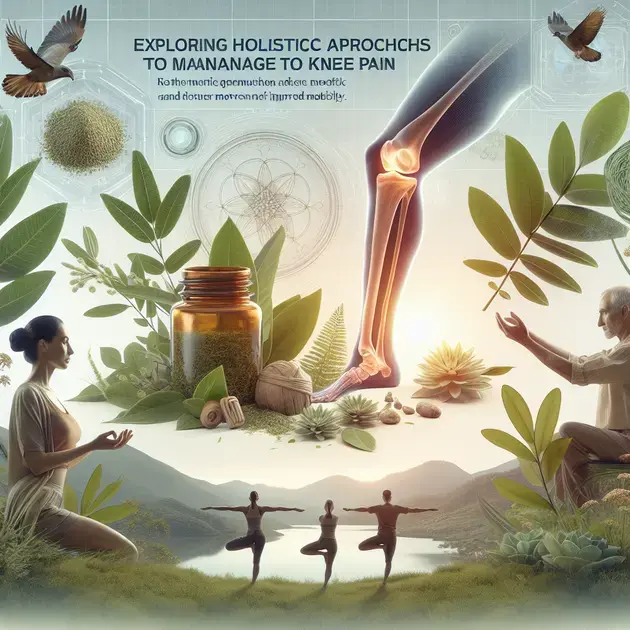Dealing with pain in the knee when walking can be a challenging and frustrating experience, affecting daily activities and quality of life. From minor discomfort to severe pain, there are various causes that can contribute to this issue, such as injury, overuse, arthritis, or other underlying health conditions.
Finding the right solutions to alleviate knee pain when walking is crucial for improving mobility and overall well-being. Whether it’s through proper rest, physical therapy, medications, or lifestyle adjustments, addressing the root cause of the pain is essential for long-term relief and prevention of further complications.

Identifying Common Causes of Knee Pain When Walking
When experiencing knee pain while walking, it is important to identify the common causes that may be contributing to the discomfort. One common cause is overuse or repetitive strain on the knee joint, which can lead to inflammation and pain. Another common cause is improper footwear or shoes that do not provide adequate support for the knees. It is also possible that muscle imbalances or poor biomechanics are causing the knee pain.
A helpful step-by-step approach to identifying the common causes of knee pain when walking is to consult a healthcare professional, such as a physical therapist or orthopedic specialist. These professionals can assess your gait, muscle strength, and joint alignment to determine the root cause of your knee pain. Additionally, using mobile apps like MyFitnessPal or Fitbit can help track your daily activity levels and provide insights into how your movements may be affecting your knees.
Furthermore, online resources such as the Mayo Clinic website or WebMD can offer valuable information on common knee pain causes and symptoms. By educating yourself on the potential reasons for your knee discomfort, you can better understand how to address the issue and find relief.
Effective Solutions for Alleviating Knee Pain During Walking
Once you have identified the causes of your knee pain when walking, it is essential to explore effective solutions for alleviating the discomfort. One effective solution is to incorporate strengthening exercises for the muscles surrounding the knee, such as quadriceps and hamstrings. These exercises can help improve the stability and support of the knee joint.
Another helpful step-by-step approach is to consider using assistive devices like knee braces or orthotic inserts to provide additional support and reduce strain on the knees. Applications like Nike Training Club or PhysiApp can offer guided workouts specifically designed to target knee pain and strengthen the supporting muscles.
In addition, modifying your walking or running technique through online resources like the Road Runners Club of America website or Couch to 5K app can help reduce stress on the knees. By implementing proper form and technique, you can minimize the impact on your knees during physical activity.
Implementing Lifestyle Adjustments to Reduce Knee Discomfort
Reducing knee discomfort often involves implementing lifestyle adjustments that promote overall joint health and mobility. One important lifestyle adjustment is maintaining a healthy weight through proper nutrition and regular exercise. Excess weight can put additional strain on the knees, leading to pain and discomfort.
To address knee discomfort, consider incorporating low-impact activities like swimming or cycling into your routine, as these activities are gentle on the joints. Fitness apps such as Strava or Peloton can provide workout plans tailored to reduce knee discomfort and improve overall fitness.
Furthermore, practicing good posture and ergonomics in daily activities can help alleviate knee pain. Online resources like the Ergonomics Health Association website or the Upright GO app can offer tips on proper body mechanics and posture to reduce strain on the knees during movement.

Understanding the Mechanics of Knee Pain While Walking
When it comes to understanding the mechanics of knee pain while walking, it’s essential to consider the complexity of the knee joint. The knee is a weight-bearing joint responsible for supporting the body’s weight and facilitating movement. During walking, the knee joint undergoes a series of motions, including flexion, extension, and rotation. Any misalignment or excessive stress on the knee joint can lead to discomfort and pain.
One common cause of knee pain while walking is osteoarthritis, a degenerative joint disease that affects the cartilage in the knee. As the cartilage wears down, the bones in the knee joint may rub against each other, causing pain and inflammation. Other factors such as overuse, injury, or biomechanical issues can also contribute to knee pain while walking.
To address knee pain while walking, it’s important to consult with a healthcare professional for an accurate diagnosis. They may recommend physical therapy, joint injections, or in severe cases, surgery to alleviate pain and improve mobility. In some instances, simple lifestyle modifications such as wearing supportive footwear or losing weight can help reduce knee pain during walking.
Overall, understanding the mechanics of knee pain while walking involves recognizing the intricate structure of the knee joint and identifying potential causes of discomfort. By addressing these factors and seeking appropriate treatment, individuals can enhance their quality of life and enjoy pain-free walking.
Holistic Approaches to Managing Knee Pain with Movement
When it comes to managing knee pain with movement, holistic approaches focus on addressing the underlying causes of discomfort rather than just alleviating symptoms. Holistic practices emphasize the connection between the mind, body, and spirit in promoting overall wellness and healing. For individuals experiencing knee pain while walking, holistic approaches offer a comprehensive and integrative approach to pain management.
One holistic approach to managing knee pain with movement is through mindfulness practices such as yoga and meditation. These techniques help individuals cultivate a heightened awareness of their body, reduce stress, and improve flexibility and strength. By incorporating mindful movement into their routine, individuals can enhance their overall physical and mental well-being while addressing knee pain.
In addition, holistic modalities such as acupuncture, chiropractic care, and herbal remedies can also play a role in managing knee pain with movement. These natural therapies target specific points in the body, promote alignment, and reduce inflammation, helping to alleviate discomfort and improve mobility. By integrating these holistic approaches into their healthcare regimen, individuals can experience a more balanced and sustainable approach to managing knee pain while walking.
Overall, holistic approaches to managing knee pain with movement offer a personalized and comprehensive strategy for addressing discomfort and promoting overall wellness. By exploring the interconnected nature of mind, body, and spirit, individuals can enhance their quality of life and achieve lasting relief from knee pain during walking.
Exploring Natural Remedies for Knee Pain When Walking
As individuals seek natural remedies for knee pain when walking, they may discover a range of holistic approaches and alternative therapies that can help alleviate discomfort and improve mobility. Natural remedies focus on using botanicals, supplements, and lifestyle modifications to address the root cause of knee pain and promote healing from within. By exploring natural remedies, individuals can harness the power of nature to support their joint health and overall well-being.
One popular natural remedy for knee pain when walking is the use of turmeric, a spice known for its anti-inflammatory properties. Turmeric contains curcumin, a compound that helps reduce inflammation and alleviate pain in the joints. By incorporating turmeric into their diet or taking supplements, individuals can potentially experience relief from knee pain and stiffness while walking.
In addition to turmeric, other natural remedies such as ginger, Boswellia, and glucosamine can also play a role in managing knee pain when walking. These natural ingredients help reduce inflammation, support joint function, and promote cartilage health, ultimately leading to improved comfort and mobility. By exploring these natural remedies in consultation with a healthcare provider, individuals can develop a personalized approach to managing knee pain with natural solutions.
Overall, exploring natural remedies for knee pain when walking offers individuals a holistic and gentle way to address discomfort and support their joint health. By tapping into the healing power of nature and embracing natural remedies, individuals can take proactive steps towards enhancing their mobility, reducing pain, and improving their overall quality of life.
**
Conclusion
**
Understanding the mechanics of knee pain while walking is crucial for addressing discomfort effectively. The knee joint’s complexity, responsible for supporting body weight and facilitating movement, undergoes various motions during walking, making misalignment or excessive stress common culprits of pain. Osteoarthritis, overuse, injury, and biomechanical issues are frequent causes of knee pain while walking, necessitating a thorough consultation with a healthcare professional for accurate diagnosis.
Holistic approaches to managing knee pain with movement offer a comprehensive strategy by addressing underlying causes rather than just symptoms. Practices like yoga and meditation enhance awareness, reduce stress, and improve flexibility, empowering individuals to manage knee pain effectively. Additionally, modalities such as acupuncture, chiropractic care, and herbal remedies target specific points in the body, promoting alignment and reducing inflammation for improved comfort and mobility.
Exploring natural remedies for knee pain offers individuals a gentle yet effective way to address discomfort and support joint health. Turmeric, with its anti-inflammatory properties, ginger, Boswellia, and glucosamine are natural ingredients that play a significant role in managing knee pain. These remedies, coupled with lifestyle modifications, enable individuals to tap into nature’s healing power, enhancing mobility, reducing pain, and improving overall quality of life in a holistic manner.